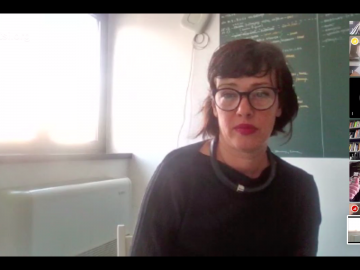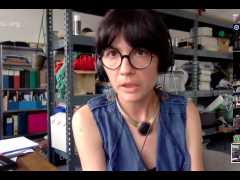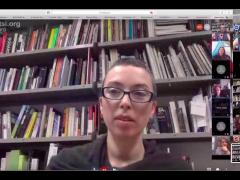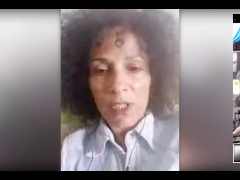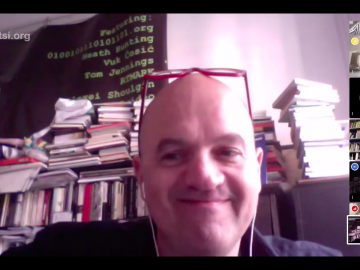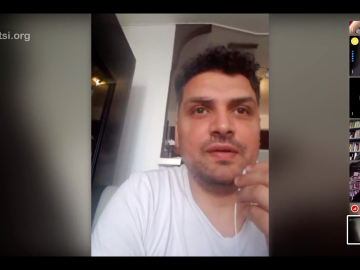Online symposium with Fotini Gouseti: Mauro Fiumano

Rijeka’s popular symbol Moretto (Morčić) is a traditional figurine, in the form of a black head, wearing a white and red turban. The Moretto symbol functions as an amulet, made to prevent the evil and the Other.
Symposium ‘Mauro Fiumano’, organised by artist Fotini Gouseti, was dealing with this subject, and it took place on 28th of May 2020 through Jitsi platform.
Below, read more about the local popular phenomenon of Moretto discussed at the symposium.
Rijeka’s popular symbol Moretto (Morčić) is a traditional figurine, in the form of a black head, wearing a white and red turban. According to the legend, Moretto derived straight out of the Grobnik battlefield where, on 24th March 1595, locals defended their area against the Ottomans.
The Moretto symbol functions as an amulet, made to prevent the evil and the Other, and commonly takes the form of an earrings, made out of gold and enamel, with optional use of gemstones, worn in different manners throughout history by different classes and all genders.
Rijeka, a historically significant port named after the river, used to hold within the city an actual border between the East and the West. The demarcation of the borderline separating Italy from SHS took place on 1954, leaving the term ‘soft colonialism’ bending around.
Today Morettos that are embedded within the urban landscape on both sides, manifest a tradition claiming contemporary readings, while the broad social embodiments of Moretto are warmly celebrated, although sometimes raise questions.
Which are the different connotations framing Moretto throughout the latest centuries? In which ways Rijeka’s cultural identity is represented though Moretto today?
Fotini Gouseti initated this online symposium in order to bring together cultural workers of diverse backgrounds engaged in the broader areas Moretto implicates, in the context of Mauro Fiumano research.
Symposium took place on 28th of May 2020 through Jitsi platform.
The digital meeting functioned as a methodological tool during a period of social distancing, expanding the ways interviews take place during fieldwork, as well as, a platform for public debate. The scope was to explore contemporary meanings of the Moretto figurine itself, and look into the emerging perceptions of who the Other, whom Moretto represents, may be today. Mauro Fiumano project aims to contribute to a critical dialogue with other existing traditions in Europe that also implicate black figures, and that, in some cases, can be linked to colonial pasts. Avoiding a univocal deterministic reading of the colonial, or the logic of cultural appropriation often practiced within the arts in the postcolonial era in Europe, Moretto will raise its voice locally, on the base of its specific social and historical background.
Participants of the symposium:
Theodor de Canziani (art historian)
Vuk Ćosić (artist)
Etem Fazli (director of the Roma youth association Roma future)
Art collective Fokus group (Iva Kovač)
Sama Selimović (ethnologist)
Lela Vujanić (leader of the Kitchen program line within the project Rijeka 2020 – European Capital of Culture)
Fotini Gouseti (artist and leader of the project Mauro Fiumano)
Moderator: Marina Tkalčić
The symposium was a part of a residency program within EU project Risk Change implemented by MMSU. It was initiated by resident artist, Fotini Gouseti, as a result of her Mauro Fiumano research project conducted in Rijeka from March to May 2020.
Risk Change is a project co-financed by Creative Europe Program of European Union, Ministry of Culture of the Republic of Croatia, City of Rijeka and Rijeka 2020 – European Capital of Culture.





Galerija

